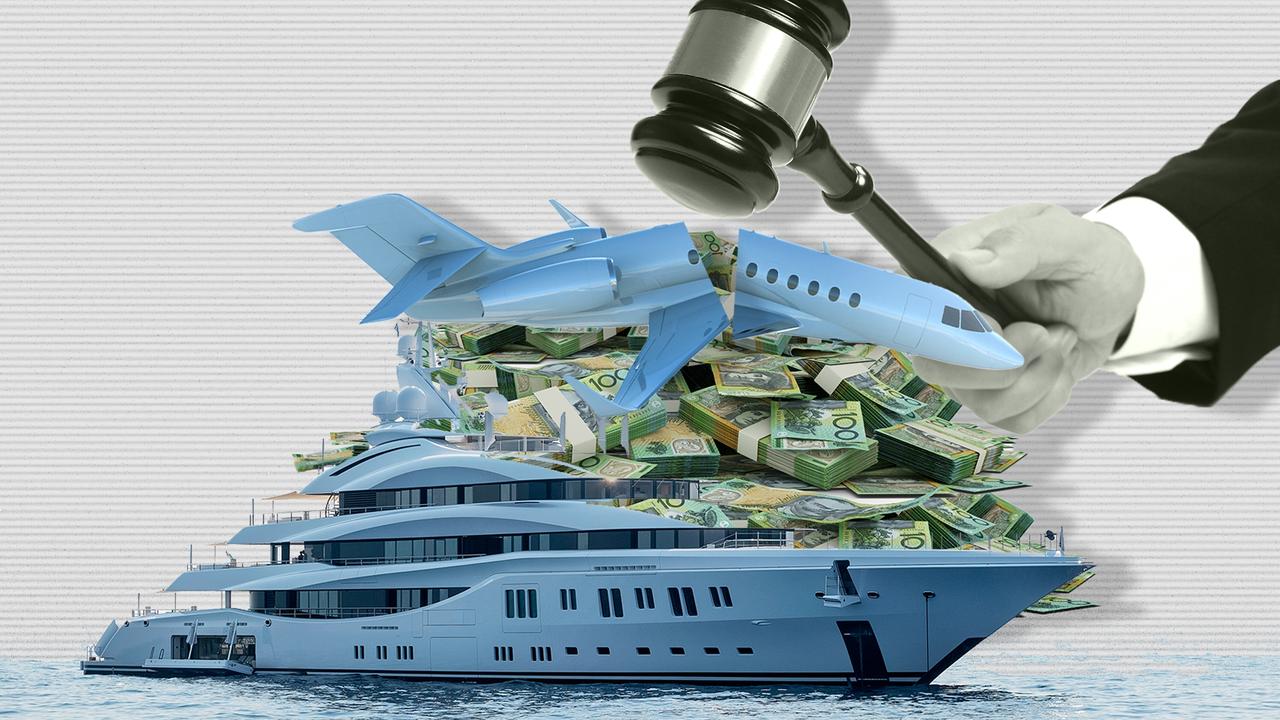Fantasy fleet with fantasy dollars in a fantasy future
The navy needs an urgent upgrade but the Albanese government’s plans are ludicrous. It’s offering a fantasy fleet with fantasy dollars in a fantasy future. And wants to pin a chest full of medals on itself. You can’t defend Australia like that.
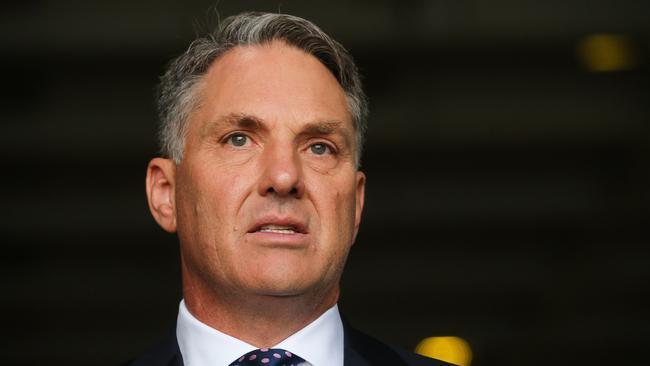
The surface fleet review, issued by Defence Minister Richard Marles, is the single most important document the Albanese government will ever produce. For it’s the definitive declaration that for the next 10 or 15 years we will make no effort at all to defend ourselves or significantly increase our military capability, no matter how grave the strategic circumstances.
As a nation, we’ve bugged out of our own military security.
How can this be, when the document plans to double the size of our surface navy?
The Albanese government is fully committed to enlarging the navy, but only in its second decade in office. A government that does nothing now but promises a lot in 10 to 20 years is a government really doing nothing at all.
Even if the government’s implausible plans are carried out perfectly, the surface fleet doesn’t actually grow in size until 2033. We won’t get the whole, still pretty modest, fleet until the mid-2040s. In the time the Albanese government can reasonably expect to carry out its policies, the next few years, it will cut the size of our pitifully small fleet from 11 ships to nine, it will refuse to implement the SFR’s clear recommendation to conduct a major upgrade on the Anzac-class frigates, it won’t put Tomahawk missiles on the Collins-class submarines (as it more or less promised in opposition) and it’s reducing the number of so-called tier 1 combat vessels we aspire to build.
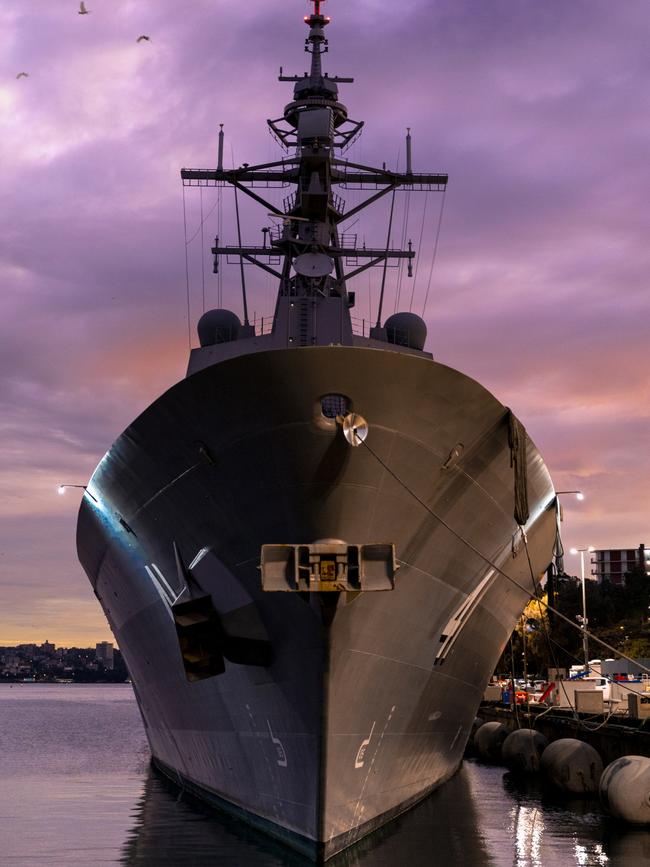
Labor is like a British government in the mid-1930s, espying dangers ahead, heroically embarking on a military build-up that begins in 1945 and comes to fruition about 1958.
Nuts, you think?
The government’s naval plans contain so many internal contradictions, involve so many ludicrous assumptions, are so implausible financially and are so strategically insouciant that they deserve proper unpacking to demonstrate some of the follies and frolics they embody.
Surely no country spends defence dollars as ineffectively as we do. Marcus Hellyer, a former Defence official with intimate defence budget knowledge, notes that before the first Hunter-class frigate enters service in 2034 we will have spent $20bn on the project. This decade we will also spend $58bn on the nuclear submarine program. So we spend $80bn on two programs before either of them yields any capability.
Those are not the actions of a nation facing its most dangerous strategic circumstances since World War II’s end.
One thing the Albanese government says is absolutely true: it has inherited a dismal situation from a woefully underperforming previous government. The Morrison government apparently decided, appallingly, that once it landed the AUKUS deal in principle it didn’t have to do anything else in defence.
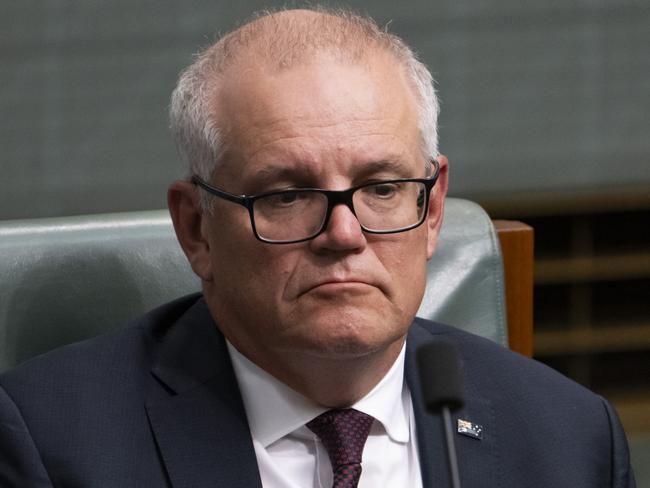
Marles said: “We inherited a declining fleet and we did not inherit a plan to replace it.” That’s right. The previous government deserves every criticism. Defence is a bipartisan failure.
But here’s the thing. The Australian Defence Force is not meant to inflict another defeat on Scott Morrison, or even make life difficult for Peter Dutton. Its purpose is the contemporary military defence of Australia. On that metric, the Albanese government will be as bad as its predecessors and, given the gravity of our circumstances, possibly worse.
The only convincing purpose for such long-range, unrealistic plans is to get Labor through the next election without spending any money. We’re getting nuclear-powered subs and doubling the surface fleet, Labor will argue, who could ask for more? The government is maddeningly opaque. It’s difficult to trust its figures. But some things are straightforward.
The surface fleet today consists of 11 ships – eight Anzac frigates and three air warfare destroyers. Their combined strategic weight is minuscule. Each AWD has 48 vertical launch system cells, each Anzac has eight. The number of VLS cells is not everything in capability but in the age of missiles and drones it’s a telling measure.
The government plans to retire one Anzac immediately and in 2026 retire another. That reduces our fleet to nine ships at a time of maximum strategic challenge.
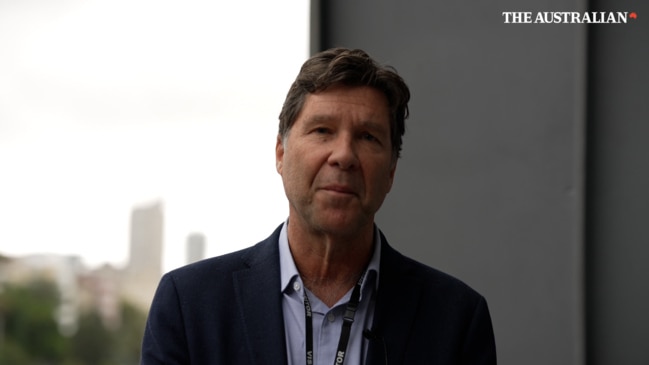
The government will continue the order for Hunter frigates optimised for anti-submarine warfare but build six instead of nine. The Hunters have a woefully inadequate 32 VLS cells. They will weigh 10,000 tonnes each and are eye-wateringly expensive. The first one arrives in 2034. A US Arleigh Burke-class destroyer, by contrast, has 96 VLS cells, weighs less and is cheaper. It also has anti-submarine capability. Modern Chinese destroyers have 100 VLS cells.
Some missile types can be packed four to a cell. A ship with a lot of VLS cells can keep adversaries under threat at great distance with long-range missiles but also possess big numbers of defensive missiles to protect itself or a designated area.
Many analysts argue the Hunters are radically undergunned. We’ll get our sixth and final Hunter in 2043.
The government classes the Hunter as a tier 1 combat ship. That’s pretty generous. It also classes our AWDs as tier 1. That’s fairly generous too. But the Hunters are the only new tier 1 ships we’re going to build until deep into the 2040s when we replace the AWDs.
We will also acquire seven to 11 general-purpose frigates. We’ve made this a competition between four companies, one each from Germany, Japan, South Korea and Spain. The government requires these essentially quite light frigates (three of the four are the size of the Anzacs) to have double the VLS cells of the Anzacs; that is, 16 VLS cells.
That puts them at the small, light, not very dangerous end of combat frigates. The Japanese candidate is a bit bigger and has 32 VLS cells. The government will hold a formal contest between these four and select a winner next year. It will then negotiate a contract and hopefully begin production in 2026. The big innovation is that the first three will be built in their country of origin and then the next four to eight built here.
The government calls these tier 2 vessels. It claims this will be an off-the-shelf purchase; it will buy an existing ship type. But in words that should send a chill of terror down the spine of every taxpayer, and everyone who wants a formidable navy, Defence Industry Minister Pat Conroy said: “We’re de-risking this project by focusing on as little change as possible.”
Yikes!
As little change as possible? That’s an opening as wide as the Sydney Heads for our navy, which cannot resist endless tinkering with every project to make it more complex to build, slower to deliver and vastly more expensive.
Across defence industry, everyone tells you the single greatest reason for the chronic cost over-runs and delays in all our projects is the endless tinkering, changes and new requirements.
There’s no need for the government to have waited nearly two years to make what are really back-of-the-envelope decisions with no financial precision or near-term consequence. It’s absurd to allow Defence to run, in the words of Michael Shoebridge of Strategic Analysis Australia, “its traditional beauty contest”. And there’s not much reason for any international defence manufacturer to see us as a reliable customer, so there’s bound to be a price premium.
In any event, it will be a miracle if Defence makes a decision by next year.
But imagine that miraculously, uniquely, everything goes to plan and with 11 new tier 2 general-purpose frigates, three AWDs and six Hunter frigates we’ll have a surface navy of 20 not very formidable ships by the mid-2040s. Whoopee. Watch out, Beijing, surely you can’t match that.
Shoebridge says: “The urgent problem is that we have limited naval capability in this next 10 years and beyond, and so we have an urgent need to produce something this decade. So the urgent answer is that we don’t upgrade the Anzacs and we don’t build anything new.”
The government claims it will get the first new general-purpose frigates by the end of this decade. But remember the selection process that gave us the Hunter. It was supposed to choose a mature design already in service. Instead, we got a developmental design that we’ve been modifying ever since.
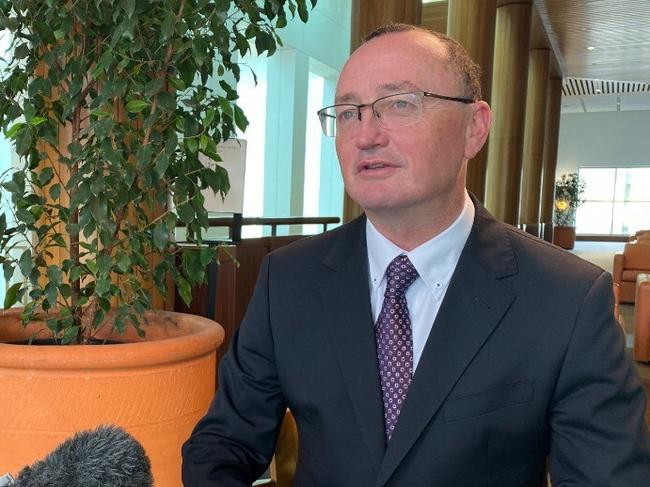
There’s no reason to think we’ll get the frigates on the government’s timeline, yet we’ve deliberately decided not to do the Anzac-class upgrade, which the SFR recommends to make sure the Anzacs can cope until the new frigates come along. Sound familiar?
The last piece of the government’s promised new fleet is six large optionally crewed surface vessels. These are seaborne missile trucks, with 32 VLS cells each. They can be operated without a crew but Marles says we’ll crew them. The fact we want to build LOSVs is an admission we don’t have anywhere near enough VLS cells on our surface fleet.
But wait, there’s more. These LOSVs don’t yet exist. They are a developmental, experimental effort by the US Navy, which may or may not continue with them. They’re convenient for the purposes of this exercise by the Albanese government because they don’t actually exist, therefore they’re perfect; and we’re planning to get them from sometime in the late 2030s, therefore their budget is on Star Trek time. By counting them nonetheless, the government claims to produce a fleet of 26 surface ships.
Here’s one startling fact. It’s not until several years after 2043 that we will actually build our first major combat vessel with a competitive number of VLS cells.
Who can believe any defence dollar figures that come from this government? It has told us the cost of nine Hunter frigates has blown out by another $20bn to $65bn, which means they’d notionally cost $7bn each, making them the most expensive frigates ever conceived. But Craig Lockhart, managing director maritime for BAE Systems Australia, said he had no idea where that number came from, he couldn’t recognise it at all. There’s no such blowout as far as he knows.
What sort of cockamamie amateur hour exercise is the government running here? It can’t agree within $20bn or so on the likely costs with its major contractor on its biggest surface ship project ever after six years? And it apparently didn’t even tell BAE in advance what it planned to say? This gives ramshackle incompetence a bad name.
A government serious about defence would have gone, within months of taking office, to the Japanese or some other trusted ally, as a single-source contractor, and got them to build big frigates for us as soon as possible. And the navy wouldn’t have been allowed to alter a single widget.
The dollar sums in this plan are all but meaningless. One of the most senior figures ever to work in defence told me the only defence dollars you can trust are those in the current six-month period because all governments endlessly change everything.
Certainly money not in the forward estimates, which covers the next four years, is just fantasy. The government says it will provide $11bn extra funding over the next decade but just $1.7bn over the forward estimates. That notional extra money has got to fund all those frigates from overseas and all the ones we’re going to build at home and everything else that’s new. You believe that?
Of all the things the government said, surely the most preposterous was this from Marles: “This fully funds the surface fleet over the next decade and beyond.”
That is absurd. The government hasn’t selected a new frigate, much less negotiated a contract. We have no idea what they’ll cost.
The government is introducing energy and industrial relations policies that will make domestic manufacturing much more expensive even than today. Remember the Defence leadership said in 2018 that nine Hunter frigates would cost $35bn. Under the same Defence leadership, that cost has now allegedly blown out to $65bn. How can this project nearly double in cost over the past six years but not move another dollar over the next 10?
Then there’s no mention of the cost of replenishment and supply vessels we’ll need for the new fleet, the bigger wharves and other onshore costs. What about the de-mining fleet we were going to acquire? Where are the missiles coming from for these ships?
The government says we’ll begin making missiles in 2025 but these are the shortest range – 70 to 90km – GIMLRS artillery rockets, for HIMARS army artillery. There’s no sign of the missiles these ships will need.
This plan is still very much Dad’s Navy, or indeed your grandfather’s navy. But real-world realities are changing. US Vice-Admiral Brad Cooper said this week the US was involved in one of the biggest naval battles since World War II in the Red Sea, where it’s under constant attack by Yemeni Houthis.
That’s a striking comment. The US has the most powerful navy in the world. And its greatest actual naval combat is against a militia with drones. The Ukrainians have destroyed powerful Russian ships with cheap drones. Australian companies make these drones, some with a range of 1000km. But the Australian Defence Force doesn’t want them.
Australia still doesn’t have a single armed drone. We’ll allegedly get one later this year.
In the 1990s the Chinese decided to make life tough for the Americans in Asia. They pursued an asymmetric military strategy based on missiles. While the Chinese navy, then, was tiny compared with the US, in a conflict near China they could sink big US ships with missiles.
We still live in the missile age, also now the drone age. We have missiles in tiny numbers and no armed drones. Asymmetric military strategy is apparently beyond our imagination.
There’s no sign the Albanese government takes seriously the possibility we might one day have to defend ourselves, or fight alongside the Americans in a conflict in which they don’t have complete superiority, the outcome isn’t guaranteed and we have to do a serious amount of fighting.
Instead, the Albanese government offers a fantasy fleet with fantasy dollars in a fantasy future. And wants to pin a chest full of medals on itself. You can’t defend Australia like that.






